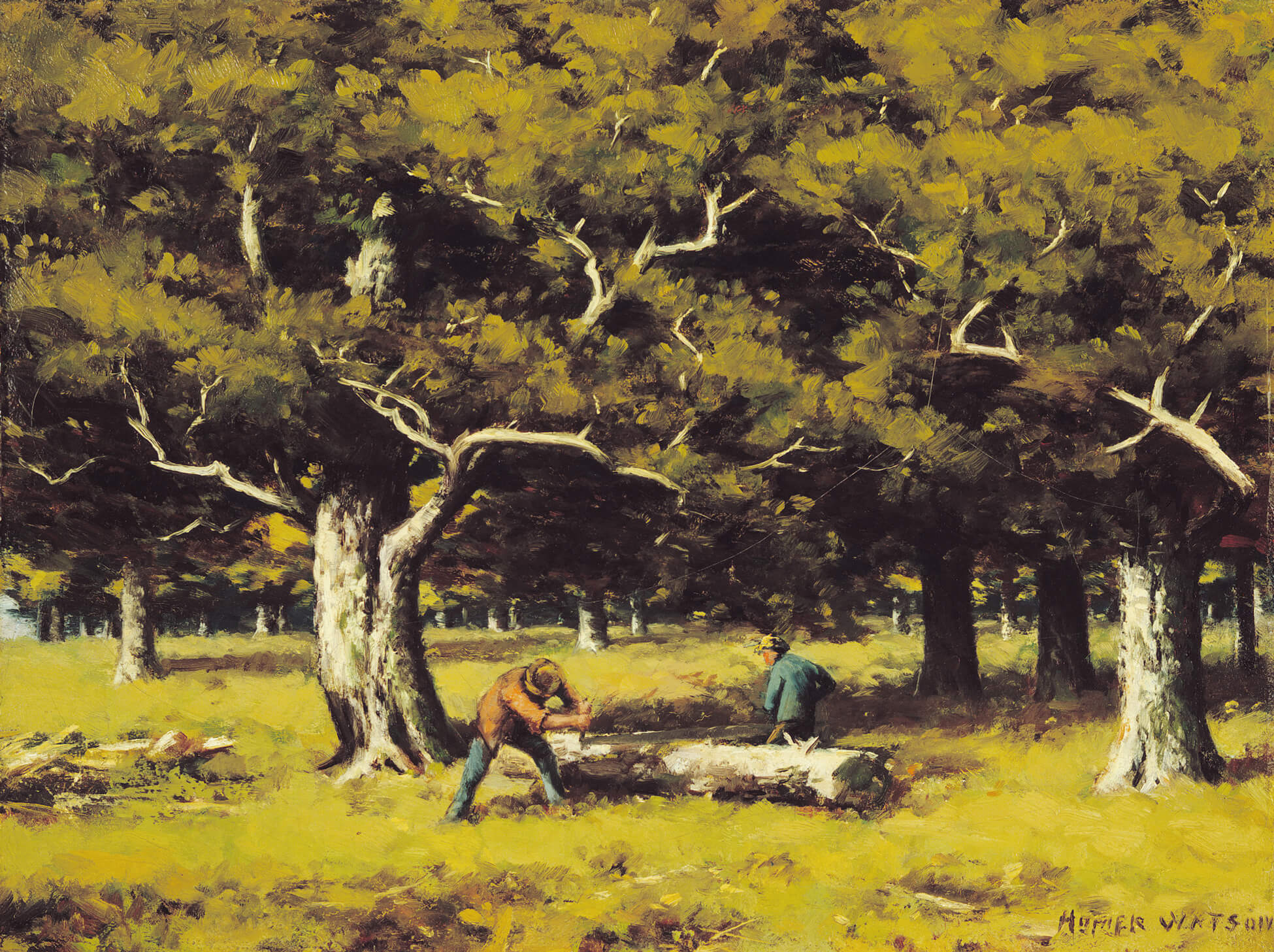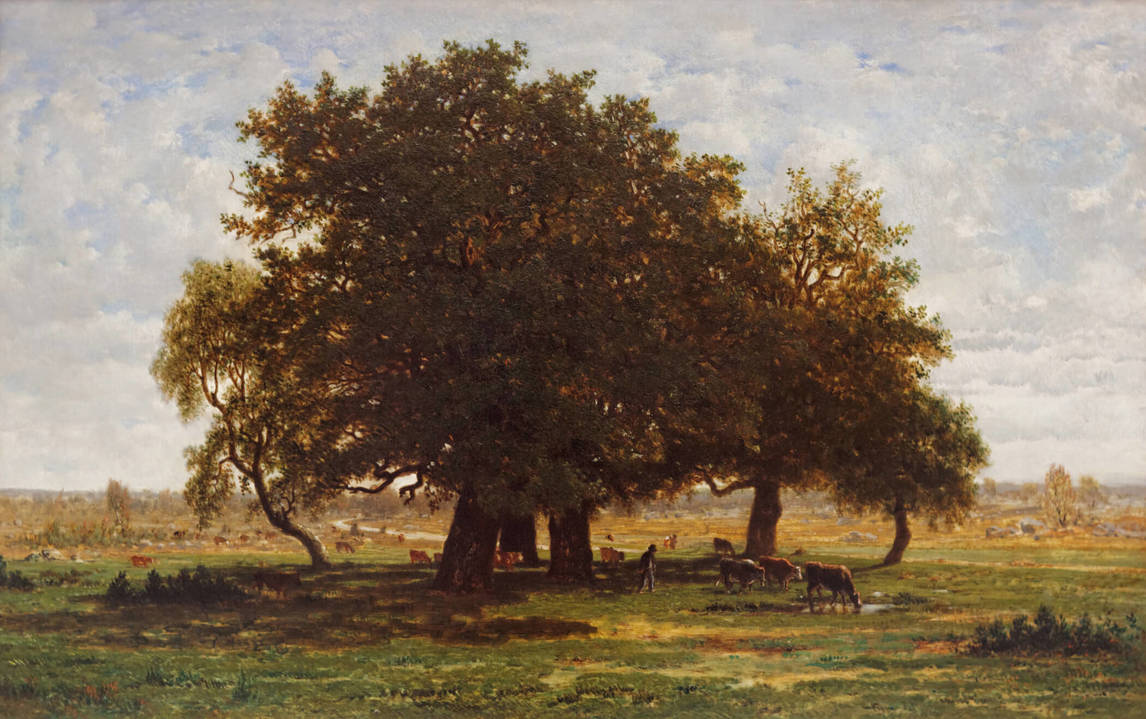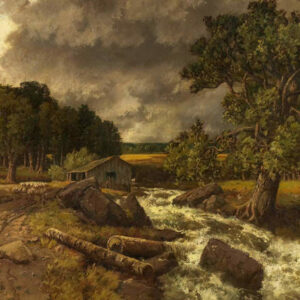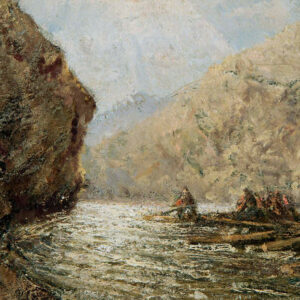Log-cutting in the Woods 1894

Homer Watson, Log-cutting in the Woods, 1894
Oil on canvas, 45.7 x 61 cm
Montreal Museum of Fine Arts
Log-cutting in the Woods depicts two loggers who are dwarfed and surrounded by trees whose branches and leaves spread over more than half of the canvas. The labour of the two men, set within a rich landscape, exemplifies Watson’s belief in the ideal relationship between human beings and nature: one of respectful interdependence. In this painting, inspired by landscapes with which Watson was familiar and dealing with a theme commonly associated with rural life, the men harvest timber from the forest, but do so without endangering the ongoing health of the natural world.

Watson painted Log-cutting in the Woods with the fluid brush strokes that by 1894 had come to dominate his work. It was one of eleven landscapes that he showed at the 1894 Spring Exhibition of the Art Association of Montreal (AAM; now the Montreal Museum of Fine Arts), where it won the $100 prize for the best seascape or landscape in the show. “Perhaps no one has been so uniformly successful this year as Mr. Homer Watson, R.C.A.,” stated the Montreal Gazette’s critic. “His work is thoroughly conscientious, and there is no striving after easily gained effects.”
The Montreal Metropolitan critic was equally impressed, claiming that “the quality of his landscapes is unsurpassed by anything in the exhibition. His work is distinctly original, and the color and composition charming. He may fairly be called the Canadian ‘Rousseau.’” It’s not clear how much the anonymous Metropolitan critic knew about Théodore Rousseau (1812–1867) beyond the fact that he was one of the Barbizon artists with whom, by this date, Watson was routinely linked in newspapers and periodicals. Like Watson, Rousseau had an intense affinity for local landscapes and the people who lived and worked in them, as well as for the expressive rendering of trees (for example, Oak Grove, Apremont, 1850–52). The two artists also shared a rich approach to paint application, a quality fully on display in Log-cutting in the Woods and that embodied Watson’s 1890s shift away from highly detailed views rendered with relatively flat paint application to canvases in which paint as a sensuous substance increasingly blurs naturalistic detail.
At the time of its 1894 exhibition, Log-cutting in the Woods was already the property of Donald Smith, 1st Baron Strathcona and Mount Royal. Smith was one of Watson’s spectacularly wealthy patrons and one of the most enthusiastic and thoughtful art collectors in Canada. Governor of the Hudson’s Bay Company, president of the Bank of Montreal, co-founder of the Canadian Pacific Railway, and Member of Parliament, he epitomized the kind of moneyed and educated Montrealers who were at the forefront of the demand for Watson’s art. Montreal owed its enviable visual arts infrastructure at that time to three principal factors: the city’s status as the financial centre of Canada; the AAM’s cultivation of a discriminating public by means of its frequent major exhibitions of Canadian and European historical and contemporary art; and the presence of the W. Scott & Sons art gallery, the best-connected and most influential commercial gallery anywhere in the country.

 About the Author
About the Author
 More Online Art Books
More Online Art Books
 Acknowledgements
Acknowledgements